General principles
The ATCvet system for the classification of veterinary medicines is based on the same overall principles as the ATC system for substances used in human medicine. In most cases, an ATC code exists which can be used to classify a product in the ATCvet system. The ATCvet code is then created by placing the letter Q in front of the ATC code.
When the human classification is not considered relevant, a specific ATCvet group or 5th level code can be established in order to make the classification more relevant for veterinary medicine. However, such changes are kept down to a minimum in order to leave the two systems as similar as possible.
Usually, specific ATCvet groups are only established for veterinary products whose indications differ from those of similar human products, e.g. immunologicals for veterinary use (QI), antibacterials for intramammary use (QJ51) and gynecological antiinfectives and antiseptics for intrauterine use (QG51).
Classification according to the main therapeutic use of a medicinal product (to the top)
Every medicinal product is classified according to its main therapeutic use. One product may be used for two or more equally important indications and the main therapeutic use may differ from species to species and from one country to another.
When a product is used for more than one indication, an ATCvet code is assigned on the basis of its main therapeutic use, as decided by the ATCvet Working Group.
Different formulations of the same substance (to the top)
One substance may be marketed in several formulations. Formulations for topical and systemic use are given separate ATCvet codes, e.g. oxytetracycline is given the following ATCvet codes for its different pharmaceutical forms:
| Oxytetracycline | |
| QD06AA03 | for topical use |
| QG01AA07 | for gynecological use |
| QJ01AA06 | for systemic use |
| QS01AA04 | for ophthalmological use |
Drugs classified in the same 4th level group (to the top)
Drugs assigned to the same 4th level group should not be considered pharmacotherapeutically equivalent, since their adverse drug reaction profiles, modes of action and therapeutic effects may differ.
| Example: | |
| QM02AA | Antinflammatory preparations, non-steroids for topical use |
| QM02AA01 | phenylbutazone |
| QM02AA23 | indomethacin |
'Other' groups (to the top)
As a general rule, a new product not clearly belonging to any of the existing ATCvet 4th level groups will be classified in an 'Other' group (usually an X group), e.g. QR06AX - Other antihistamines for systemic use. This New and innovative medicinal products will therefore often be classified in an X group and such groups could be established for only one single substance.
| Example: | |
| QR06AA | Aminoalkyl ethers |
| QR06AA01 | bromazine |
| QR06AB | Substituted alkylamines |
| QR06AB01 | brompheniramine |
| QR06AX | Other antihistamines for systemic use |
| QR06AX01 | bamipine |
Specific veterinary groups have been created, e.g. for immunologicals (QI), to allow a subdivision by species. The ATC system's subdivision of sulfonamides on the basis of their biological half-life in humans is irrelevant to veterinary use and a veterinary classification has therefore been established (QJ01E Q). A specific classification has also been established for antiparasitic products (QP), since there are considerable differences in the use of these products and the variety of substances available, compared with the situation in human medicine.
When specific ATCvet codes are created, the following digits/letters in the ATC system are reserved for use in the ATCvet classification system:
| levels 0 and 1: | Q |
| level 2: | 50-69 |
| levels 3 and 4: | Q, V, W, Y and Z |
| level 5: | 90-99 |
Example:
QJ51 - Antibacterials for intramammary use, and QA07CQ - Oral rehydration formulations for veterinary use, are examples of ATCvet codes for which there are no equivalents in the ATC system (i.e. neither J51 nor A07CQ exists in the ATC system).
Classification problems are discussed by the ATCvet Working Group, which then decides on the final classification.
Nomenclature in the ATCvet system (to the top)
- International Non-proprietary Names (INN) are preferred.
If INN names have not been assigned, United States Adopted Names (USAN) or British Approved Names (BAN) are to be chosen.
Lists of INN names are published by the World Health Organization (WHO), Geneva, and are published continuously in WHO Drug Information. Lists of USAN names are published by the US Phamacopoeia and lists of BAN names are available in the British pharmacopoeia.
- The use of the same headings for different ATCvet groups should be avoided. (Exception: when the chemical subgroup appears in different ATCvet groups, e.g. organophosphorous compounds.)
Example:
Both QP52AB and QP53AF have the heading 'Organophosphorous compounds', since both QP52 - Anthelminthics and QP53 - Ectoparasiticides include organophosphorus compounds.
- Non-specific terms like others and various should be avoided as group/subgroup names whenever possible.
Contents
Last updated: 2023-12-21

